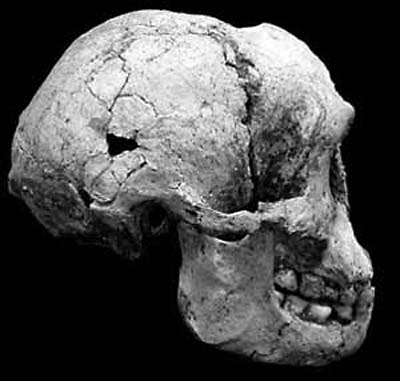
Hominid Species Time Line
Page 31
Homo floresiensis
Nicknamed the Hobbit, this diminutive species lived on the island of Flores in Indonesia from at least 95,000 to 13,000 years ago, and perhaps from much earlier. Its discovery in 2003 occasioned a great deal of publicity and multiple attempts to explain such an unexpected creature. Its discoverers classified it as Homo floresiensis (“man from Flores”) and believe it to be dwarf sub-species of Homo erectus.

Side view of LB1, the most compete H. floresiensis specimen
The island of Flores lies on the southeast or far side of the Wallace Line, a geological feature underlying and splitting the Indonesian archipelago. Flora and fauna on the northwest side represent varieties of south east Asian life forms; those across this deep-water line are kin to the life forms in Australia and New Guinea. Flores can be reached from the Asian mainland only by crossing a significant body of deep-water ocean. Scientists theorize that a group of H. erectus somehow found their way across this barrier and colonized the island. Over time, the usual “island effects” by which large animals tend to become smaller and small ones larger affected this isolated population.

H. floresiensis compared to modern human
This population is quite small in stature. A number of individuals have been recovered, and the females, at least, appear to be about 1 meter tall, with a brain size of 417 cc. They had human-like teeth and were bipedal; they used stone tools and fire, and hunted the limited number of species found on the island—giant rodents and dwarf elephants. They were probably preyed upon by Komodo dragons, the famous large lizard of Indonesia.
Flores is an active volcanic region, and this species may have been destroyed by a large eruption about 13,000 years ago. It is interesting to speculate how much they interacted with modern humans.
References:
Homo floresiensis on TalkOrigins.org